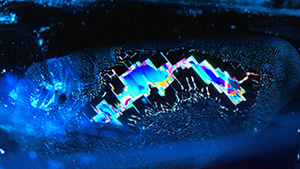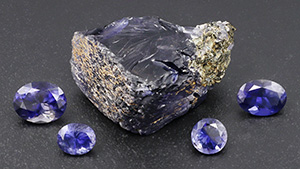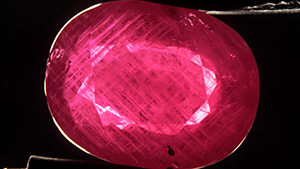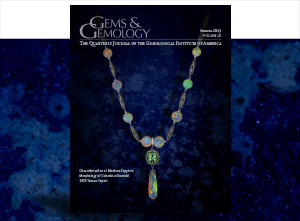
An overview of the Fall 2023 Gems & Gemology content.
Read More
A recap of the second annual Turquoise United Conference.
Read More
Fiber-optic illumination reveals rectilinear zigzag-patterned films with vibrant colors in a blue sapphire.
Read More
Examines dissolution features of heliodor and green beryl from a Ukrainian pegmatite field and offers criteria to distinguish them from samples found in other localities.
Read More
Reports on the geological setting and gemological properties of violet-blue gem cordierite from new deposits located in British Columbia.
Read More
An overview of the treatment process of ruby and pink sapphire from Greenland and its effect on inclusion scenes and chemistry.
Read More
An overview of the Spring 2023 Gems & Gemology content.
Read More
Examines the mining history and geological characteristics of the three secondary sapphire deposits in the state of Montana, as well as the properties of these sapphires (unheated and heat-treated).
Read More
Aegirine inclusions are observed in two samples of poudretteite from Mogok.
Read More